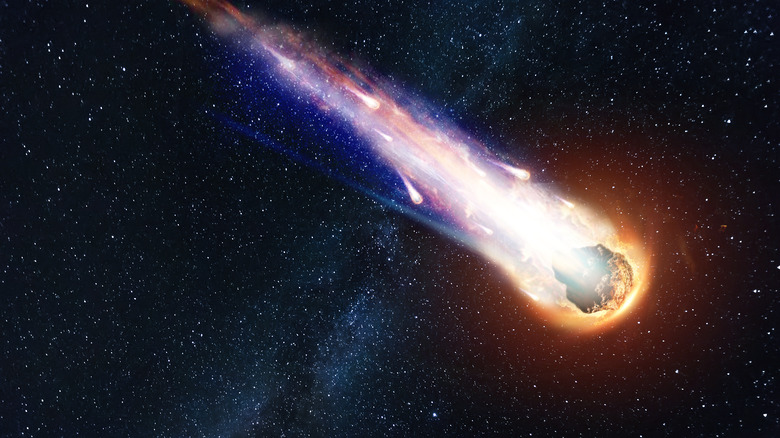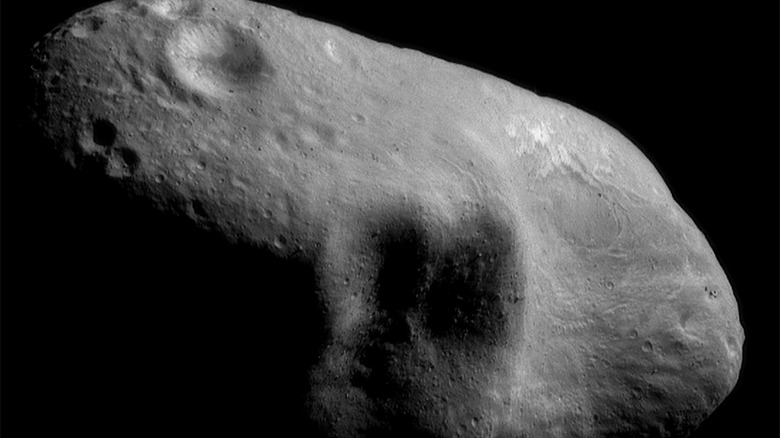Here's What Shooting Stars Are Actually Made Of
Although their visible appearance seems to happen only occasionally, shooting stars bombard the Earth on a regular basis. But, what exactly are shooting stars and what are they comprised of? According to Space.com, shooting stars are meteors, or parts of a busted-up meteor, that are small enough to vaporize in the atmosphere before making contact with the earth. So, if a shooting star is really just a meteor passing through Earth's atmosphere, what exactly is a meteor, then?
According to Geology.com, shooting stars (meteors) are pieces of a meteoroid that break off and enter the Earth's atmosphere. A type of space debris, most meteoroids are composed of silicon, nickel, and iron (via National Geographic) Meteoroids can range in size from microscopic to over 330 feet long (via How Stuff Works). The larger the meteoroid, the more likely it will break down into a shooting star as it enters the atmosphere. By the way, any piece of space debris that's longer than 330 feet is considered an asteroid.
Look! Up in the sky!
As a meteoroid enters the atmosphere, it begins to heat up. Much like the space shuttle heats up during re-entry, meteoroids also heat up due to the air resistance met when entering the atmosphere. As the meteoroid heats up, the metals within begin to glow. It's at this point, where the meteoroid because visible to the naked eye. The "tail" that follows the meteorite is the stone itself burning up. While most meteoroids burn up before making contact with the planet, some do make impact. When a meteoroid hits the earth, it's called a meteorite. Not all meteorite impacts are as dramatic as portrayed in the movies, however. In fact, most go unseen by the naked eye. According to Geology.com the Earth is pelted so much by meteorites that it gains 1000 tons of mass each day from these tiny impacts!
One thing to keep in mind though is that Space is filled with all sorts of debris, not just floating rocks. According to NASA, there are more than 27,000 pieces of human-related space debris are hanging out in Earth's upper atmosphere. Everything from dead satellites to abandoned launch vehicles float above the Earth. Every once in a while, one of these pieces of space junk will somehow lose its orbit. And if the piece of space junk is big enough, like back in May of 2021, when a 21-metric-ton Chinese rocket came crashing back to Earth (via Forbes), it appears to be burning up, giving the appearance of a shooting star. Best not to make a wish on those types of shooting stars, however.

